Abstract
Five mutagens were used to induce mutants of Candida albicans. Ultraviolet light, N-nitroso-N′-methyl-N-nitrosoguanidine, and N-nitroso-N-methylurethane were effective mutagens which induced stable auxotrophs. N-nitroso-N-methylurethane produced the largest number and variety of mutants. Nitrous acid and hydroxylamine were ineffective as mutagens although they killed C. albicans. All mutagenic agents employed induced colonial variants, especially small colony forms. The morphology, physiology, and virulence of one methionine and two adenine auxotrophs was compared to that of the prototroph. The auxotrophs exhibited yeast-like morphology in complex media and had sugar fermentation patterns typical of C. albicans, and all were agglutinated by C. albicans antiserum. Chlamydospore production was absent in the nonpigmented adenine mutant, and the chlamydospores produced by the methionine auxotroph were distorted. Germ tubes were formed in human serum by the auxotrophs and prototroph. Virulence for mice was retained by all auxotrophs but generally at a reduced level. The methionine auxotroph, only slightly less virulent than the prototroph, was more virulent than a pigmented adenine mutant and a practically avirulent nonpigmented adenine auxotroph.
Full text
PDF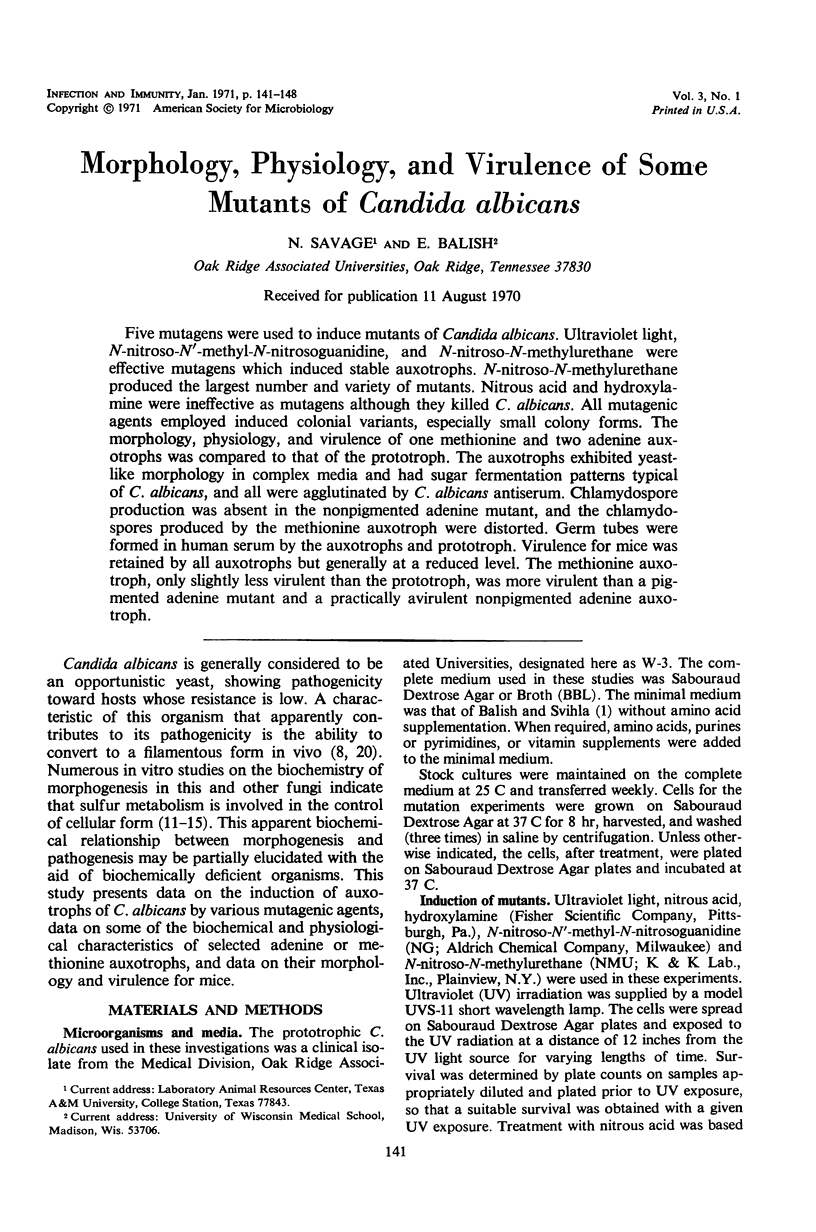
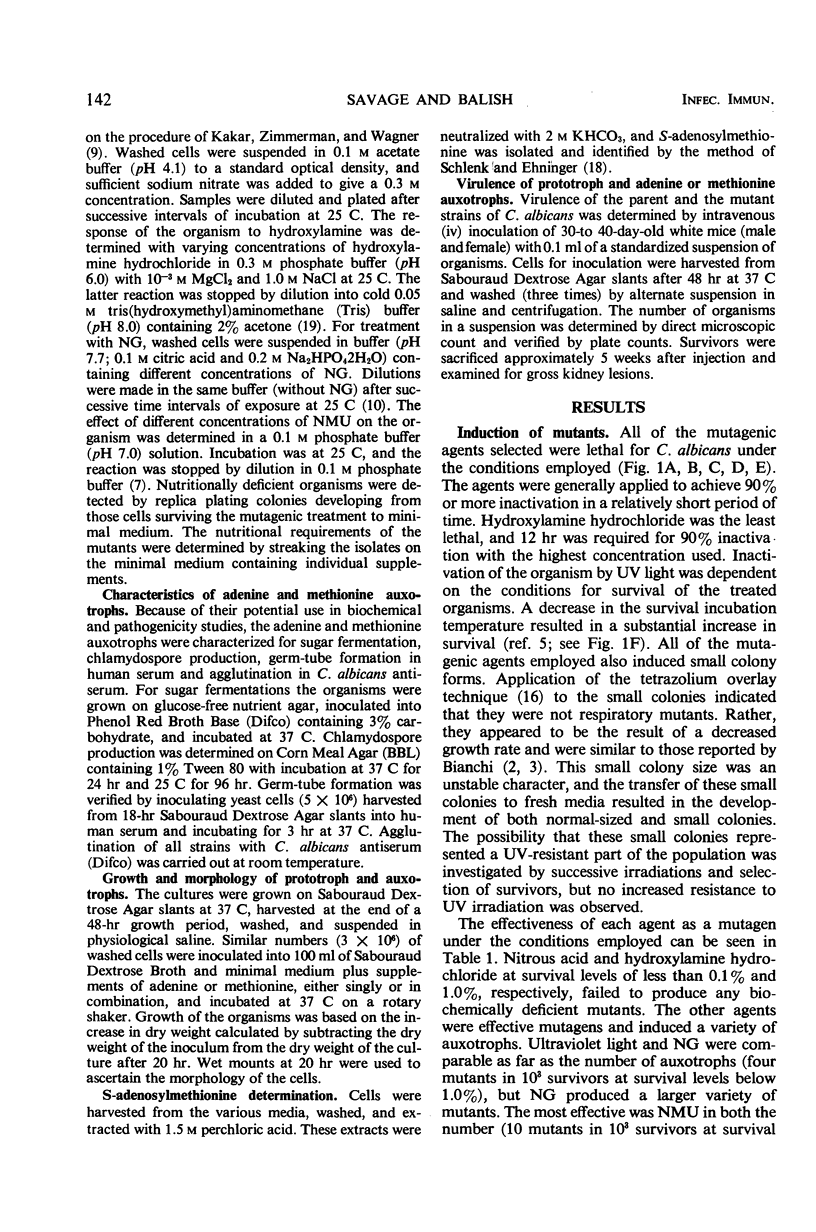
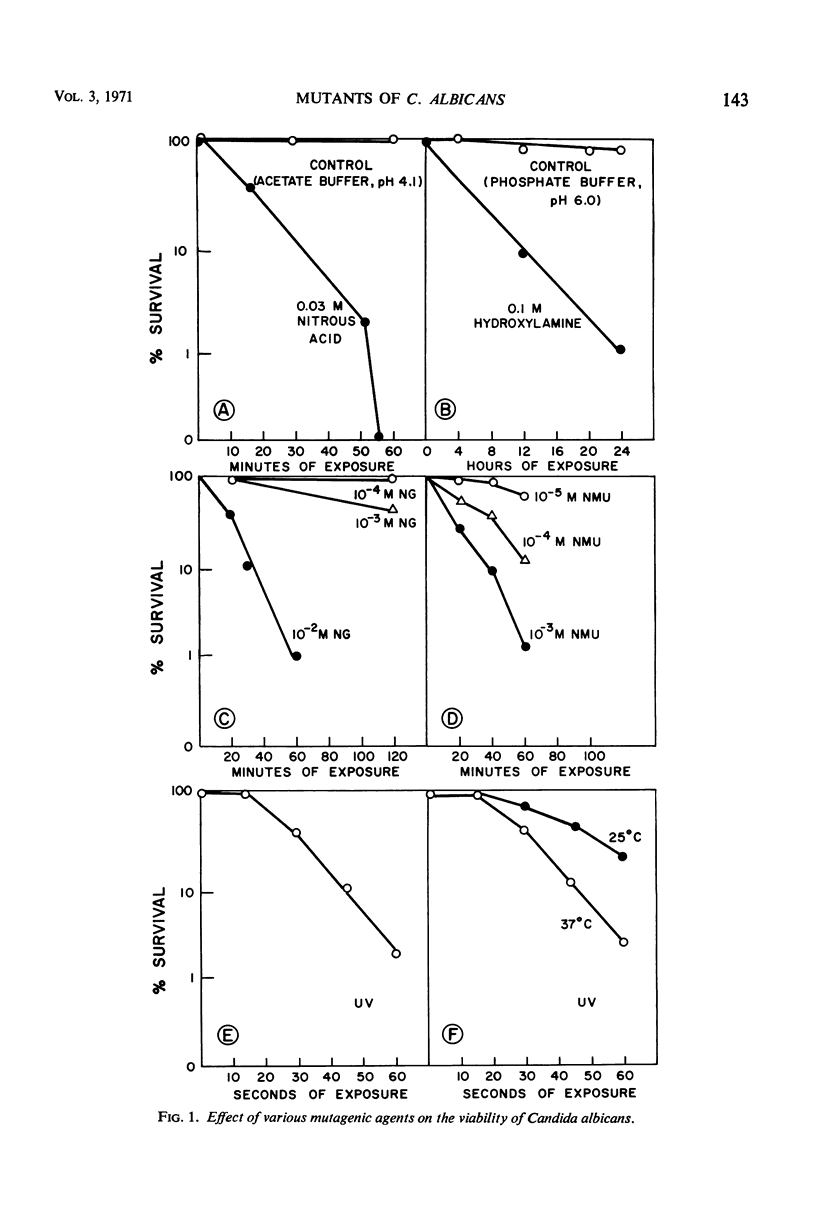
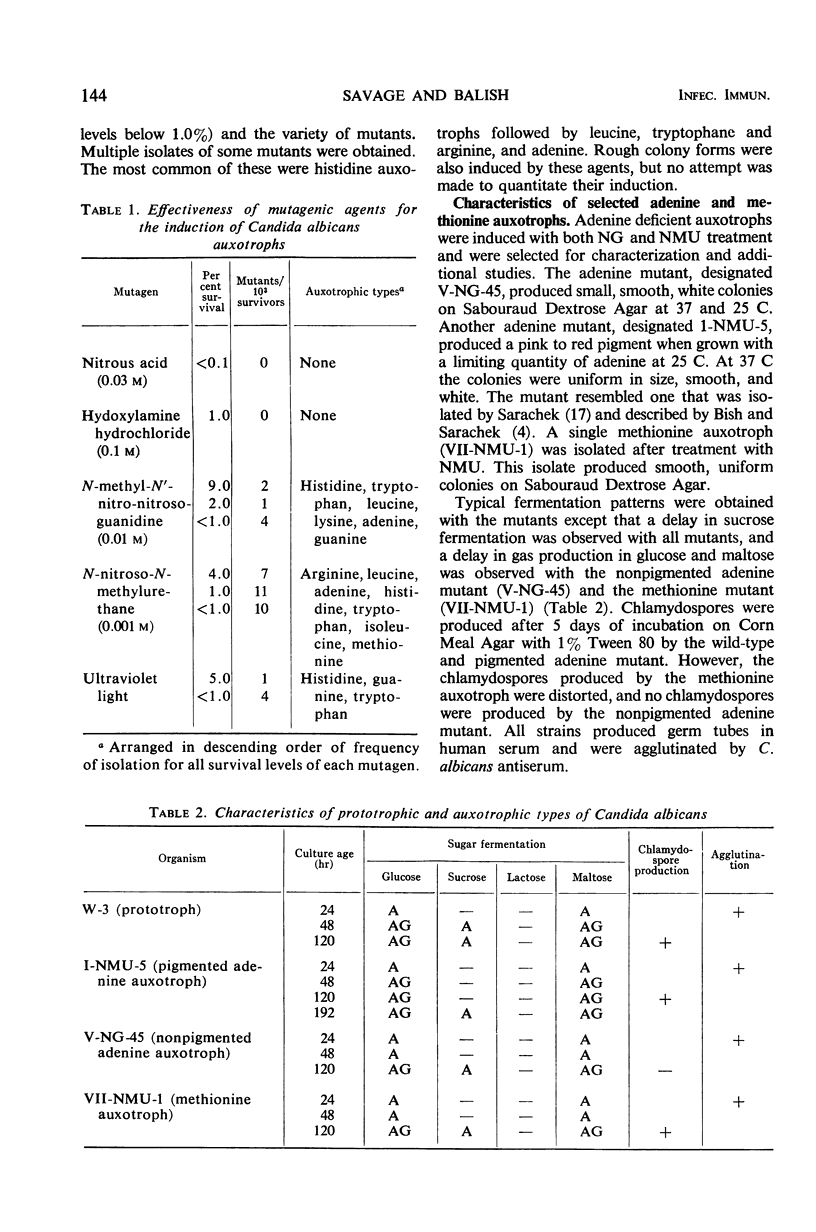
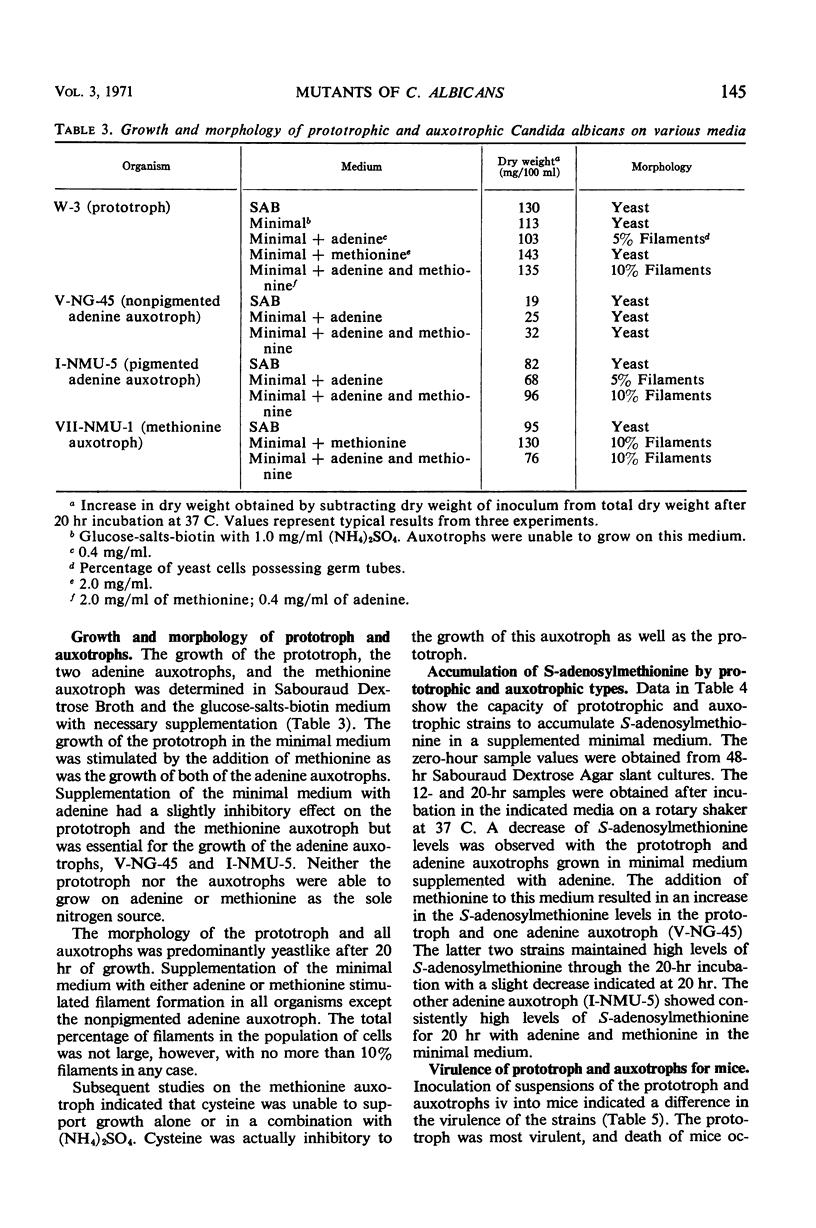

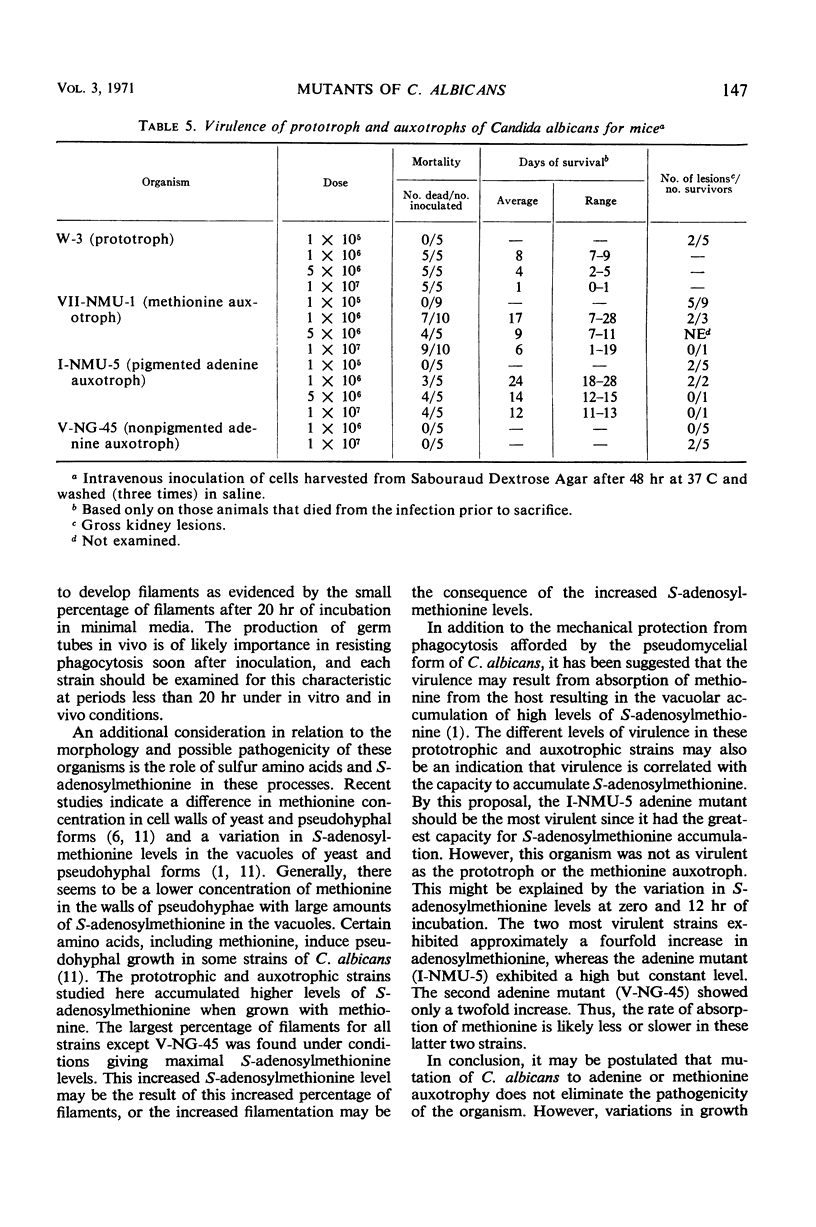

Selected References
These references are in PubMed. This may not be the complete list of references from this article.
- Balish E., Svihla G. Ultraviolet microscopy of Candida albicans. J Bacteriol. 1966 Dec;92(6):1812–1820. doi: 10.1128/jb.92.6.1812-1820.1966. [DOI] [PMC free article] [PubMed] [Google Scholar]
- Bianchi D. E. SMALL COLONY VARIANT IN CANDIDA ALBICANS. J Bacteriol. 1961 Jul;82(1):101–105. doi: 10.1128/jb.82.1.101-105.1961. [DOI] [PMC free article] [PubMed] [Google Scholar]
- Bish J. T., Sarachek A. Influences of temperature and adenine concentration upon the cultural instability of a red adenine auxotroph of Candida albicans. Mycologia. 1967 Jul-Aug;59(4):671–688. [PubMed] [Google Scholar]
- Busbee D. L., Sarachek A. Inactivation of Candida albicans by ultraviolet radiation. Arch Mikrobiol. 1969;64(4):289–314. doi: 10.1007/BF00417011. [DOI] [PubMed] [Google Scholar]
- Chattaway F. W., Holmes M. R., Barlow A. J. Cell wall composition of the mycelial and blastospore forms of Candida albicans. J Gen Microbiol. 1968 May;51(3):367–376. doi: 10.1099/00221287-51-3-367. [DOI] [PubMed] [Google Scholar]
- FALCONE G., NICKERSON W. J. Identification of protein disulfide reductase as a cellular division enzyme in yeasts. Science. 1956 Oct 19;124(3225):722–723. doi: 10.1126/science.124.3225.722. [DOI] [PubMed] [Google Scholar]
- GEBHARDT L. P., HILL D. W. Morphological transformation of Candida albicans in tissues of mice. Proc Soc Exp Biol Med. 1956 Jul;92(3):640–644. doi: 10.3181/00379727-92-22570. [DOI] [PubMed] [Google Scholar]
- Guglielminetti R., Bonatti S., Loprieno N. The mutagenic activity of N-nitroso-N-methylurethane and N-nitroso-N-ethylurethane in Schizosaccharomyces pombe. Mutat Res. 1966 Apr;3(2):152–157. doi: 10.1016/0027-5107(66)90029-7. [DOI] [PubMed] [Google Scholar]
- Loprieno N., Clarke C. H. Investigations on reversions to methionine independence induced by mutagens in Schizosaccharomyces pombe. Mutat Res. 1965 Aug;2(4):312–319. doi: 10.1016/0027-5107(65)90065-5. [DOI] [PubMed] [Google Scholar]
- Mardon D., Balish E., Phillips A. W. Control of dimorphism in a biochemical variant of Candida albicans. J Bacteriol. 1969 Nov;100(2):701–707. doi: 10.1128/jb.100.2.701-707.1969. [DOI] [PMC free article] [PubMed] [Google Scholar]
- OGUR M., ST. JOHN R., NAGAI S. Tetrazolium overlay technique for population studies of respiration deficiency in yeast. Science. 1957 May 10;125(3254):928–929. doi: 10.1126/science.125.3254.928. [DOI] [PubMed] [Google Scholar]
- SARACHEK A. PROMOTION OF RETARDATION OF THE GROWTH OF ADENINE AUXOTROPHS OF CANDIDA ALBICANS BY PURINES, PYRIMIDINES AND NUCLEOSIDES. Antonie Van Leeuwenhoek. 1964;30:289–302. doi: 10.1007/BF02046735. [DOI] [PubMed] [Google Scholar]
- SCHLENK F., EHNINGER D. J. OBSERVATIONS ON THE METABOLISM OF 5'-METHYLTHIOADENOSINE. Arch Biochem Biophys. 1964 Jul 20;106:95–100. doi: 10.1016/0003-9861(64)90161-4. [DOI] [PubMed] [Google Scholar]
- YOUNG G. The process of invasion and the persistence of Candida albicans injected intraperitoneally into mice. J Infect Dis. 1958 Mar-Apr;102(2):114–120. doi: 10.1093/infdis/102.2.114. [DOI] [PubMed] [Google Scholar]
- van de Pol J. H., van Arkel G. A. The inactivating and mutagenic effect of hydroxylamine on bacteriophage phi x-174. Mutat Res. 1965 Oct;2(5):466–469. doi: 10.1016/0027-5107(65)90058-8. [DOI] [PubMed] [Google Scholar]


